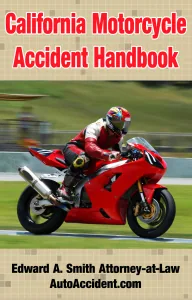
Motorcycles compose about 2% of the vehicles on the road but yet account for 42% of all fatalities involving collisions with guardrails.
When it comes to collisions involving guardrails, motorcycle riders sustain a significantly higher rate of fatality than auto occupants involved in a collision with a guardrail. Multiple studies on this subject have produced similarly uneven results. What makes this finding so alarming is that motorcycles compose only about 2% of the vehicles on the road in the U.S. but yet account for 42% of all fatalities involving collisions with guardrails. Fatalities are occurring in guardrail vs. motorcycle collisions despite the fact that more than two-thirds of the motorcyclists involved were using a helmet at the time of the impact. The fatality risk for a collision involving a guardrail is nearly 80 times higher for motorcyclists compared to their car occupant counterparts. This high fatality rate is not unique to the United States alone but countries throughout Europe also have statistics that mirror this terribly skewed risk rate with motorcycle collisions involving guardrails.
Why are fatalities so much higher in regards to motorcyclists? Occupants in a car have safety restraints. The vehicle structure itself serves to protect the auto occupants upon impact. In contrast, there is little to protect the motorcyclist involved in a collision with a guardrail. While a motorcyclist may use a helmet for some degree of protection from head injury, motorcyclists involved in guardrail collisions often suffer injuries to other parts of their body which produces a fatal blow. Multiple research studies show that the use of a helmet made no difference in decreasing fatality to motorcyclists when guardrails were involved.
The construction of the guardrails on most US roadways is designed with the intent to stop vehicles from running off the road. Unfortunately, the design of the guardrail will not just stop the motorcycle. More often than not, the guardrail becomes a ‘death trap’ as it will eject the motorcyclist from his bike resulting in blunt force trauma. The sturdy construction of the guardrail which is made to prevent large vehicles from flying off the road is not as forgiving an object when a motorcyclist is involved.
It is believed by many that the unusually high fatality rate in the United States will not change in the near future. In the U.S. there does not appear to be any studies or movements to improve the present guardrail design nor is there any movement towards the creation of countermeasures to protect the motorcyclist. While some improved guardrail models exist, the cost involved in upgrading or modifying the present guardrail system is expensive for many already burdened state, county and city budgets.
Most motorcycle riders demonstrate themselves to be safe and responsible drivers. Sadly, some road defects accompanied by unsafe guardrails have turned many roads and highways into deathtraps for the motorcyclist. Should you need someone on your side after a motorcycle accident, please contact the Edward A Smith Law Offices. While their webpage may be called AutoAccident.com this in no way minimizes their expertise in handling motorcycle collision claims. In fact, they have published a book for California motorcyclists entitled, California Motorcycle Accident Handbook, available on Amazon. They can be contacted at (800) 404-5400 for assistance.

